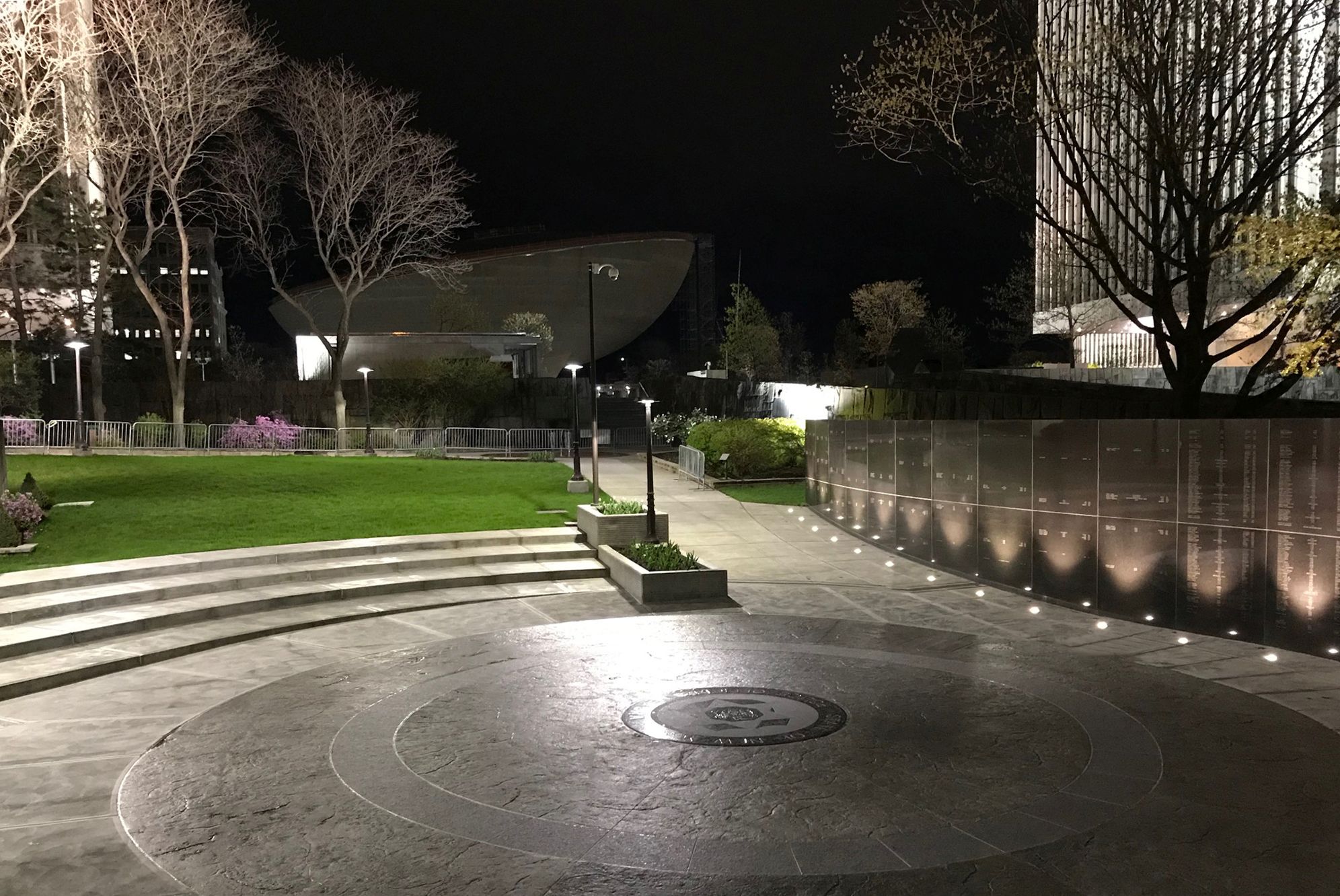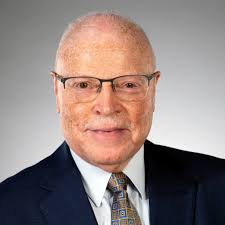New York, NY – State officials have added the names of 49 police officers from six departments to the Memorial wall in Albany honoring fallen police officers across the state. Forty-four men and five women who died in the line of duty over the last two years were recognized at a May 10 ceremony for their fatal injuries they sustained on duty, or as the result of COVID-19 or a Ground Zero-related illnesses.

The names were added to the 1,717 men and women from 150 police departments across the state and six federal agencies already on the monument.
Across the country in 2021, 458 local, state, tribal and federal officers died in the line of duty, making it the deadliest year for law enforcement officers since 1930 with COVID-19 being flagged as the leading cause of death for the second year in a row, according to NPR. There is no national occupational COVID health registry for police officers. Unions across the country have reported cases of long haul COVID that’s disabled some of their members. The CDC is currently undertaking the first of its kind six-month occupational health study evaluating rates of COVID deaths and infection in the essential workforce.
“Every day, law enforcement officers across the state selflessly put their lives on the line to protect the public, and today we honor the memory of those who made the ultimate sacrifice in order to keep New Yorkers safe,” Governor Kathy Hochul said in a statement. “We remember their courage, bravery and dedication to public service, and we thank and honor their loved ones, who have endured tremendous loss. The legacies and family members of these fallen officers will never be forgotten.”
Governor Hochul also directed that state buildings and landmarks be illuminated with blue lights to honor the fallen officers.
LIVES WITH PURPOSE
Secretary of State Robert J. Rodriguez stood in for Governor Hochul, who tested positive for COVID-19 and was working remotely. Nearly 500 people, including local, state and federal police officials, loved ones and colleagues of those honored, and elected officials, attended the ceremony.
“These individuals lived their lives with purpose, bravery, and selflessness — their loss leaves an unfilllable hole in the lives of countless loved ones, friends, and partners in law enforcement,” Secretary Rodriguez said. “We are forever in their debt as the men and women of this caliber sacrificed their lives to protect us and we honor their families who provided the support for these fallen officers to serve.”
Among those honored on Tuesday included three officer killed in workplace accidents: NYS Trooper Joseph J. Gallagher, struck by a distracted driver while he was responding to disabled vehicle in 2017, but died three years later from his injuries; Trooper James Monda, who was based at the Troop G Marine Patrol, and died in a training exercise on the Great Sacandaga Lake in Fulton County; and NYPD Detective Anastasios Tsakos who was struck and killed by a drunk driver while diverting vehicles off of the Long Island Expressway in response to a collision.
Twelve officers were remembered who died from COVID including NYPD Officer Leonardo M. Chavez; Officer Sony Clerge; Detective Stanley Dash; Officer Michael R. Mundy; Officer Marze M. Murray; Detective Shantay L. Neal-Bake; Officer Angel M. Santiago. COVID line of duty deaths also included Sands Point Police Sergeant Joseph Spinosa; Suffolk County Police Department Lt. Robert VanZeyl; Town of Wallkill Police Sergeant Barry Weisman; Yonkers Police Detective William J. Sullivan Jr.
Thirty-four NYPD police officers who died from their 9/11 World Trade Center illnesses over the last two years were added; Detective Jennifer S. Abramowitz; Sergeant Emanuele Alongi; Sergeant James P. Bast ; Detective Gerald T. Brennan; Sergeant Nathalie Brill ;Sergeant Thomas A. Byrne; Detective Leonard D. Cocco ; Officer Terence P. Connelly; Officer Reginald Cooley; Officer George F. Darini ; Detective Harry O. D’Onofrio; Officer Laurence J. Dougherty ; Detective Thomas J. Gallo ; Officer Pedro Garcia ; Detective Peter Gianfrancesco; Detective Edward R. Gorczynski; Detective Valerie K. Jacobs; Detective Jewel Jenkins; Detective Emilio Laboy; Officer Raphael A. Lora ; Officer Carl R. Ludwig; Detective Charlie W. Mackie; Officer Patrick G. Monroe; Detective Thomas L. Neal; Inspector Michael O’Neil; Officer Nicholas Purpero; Detective Mark H. Rawdon; Sergeant Mark Smith Detective William Soto; Officer Andrew D. Stromfeld; Sergeant Nemesio Vera; Sergeant Peter C. Woods; Sergeant David T. Yu; and Lieutenant John C. Zonneveld; Yonkers Police Officer Stanley J. Kasper.
A GRIM TOLL
“This ceremony was another reminder of the grim toll the past two years have taken on law enforcement officers across the state, especially New York City police officers, said PBA President Patrick J. Lynch. “Decades after 9/11 and months after the peak of the COVID pandemic, too many police officers are still paying the ultimate price for their service. Those sacrifices will continue for years to come. We must never forget.”
“Honoring fallen heroes — Detectives and fellow officers who gave their lives on behalf of those they proudly serve — is the responsibility of every elected official,” said Paul DiGiacomo, president of the Detective Endowment Association. “In addition to remembering our fallen Finest, all politicians should come together to support law enforcement and fully amend the failed ‘bail reform’ laws that further endanger my members, who risk everything fighting New York City’s crime crisis.”
The monument now includes 335 New York State police officers who have succumbed to their occupational exposure to 9/11 WTC toxins, more than ten times the number killed on the day of the attack and collapse. More individuals have subsequently perished from their exposure to the toxins present during the collapse and the several months of clean-up than died on the day of the attack.
While 343 firefighters died in the collapse, close to 300 have died from 9/11 WTC illnesses; 82,818 first responders are now enrolled in the WTC Health Program with at least one 9/11 WTC ailment or cancer. Close to 32,000 civilian survivors are also enrolled.
In the aftermath of the attack, the U.S. EPA said the air in lower Manhattan was safe to breathe but two years later, the EPA Inspector General concluded the EPA “did not have sufficient data and analyses to make such a blanket statement” as “air monitoring data was lacking for several pollutants of concern.”
Moreover, the OIG learned that it was President George W. Bush’s White House Council on Environmental Quality (CEQ) that heavily edited the EPA press releases “to add reassuring statements and delete cautionary ones.” Even though samples taken indicated asbestos levels in Lower Manhattan were between double and triple EPA’s limit, the CEQ downplayed the readings as just “slightly above” the limit the EPA IG found.
And when the EPA’s Inspector General tried to identify who had actually written the misleading press statements they “were unable to identify any EPA official who claimed ownership” because investigators were told by the EPA Chief of Staff that “the ownership was joint ownership between EPA and the White House” and “final approval came from the White House.”
“She also told us that other considerations, such as the desire to reopen Wall Street and national security concerns, were considered when preparing EPA’s early press releases,” according to the EPA’s Inspector General.





